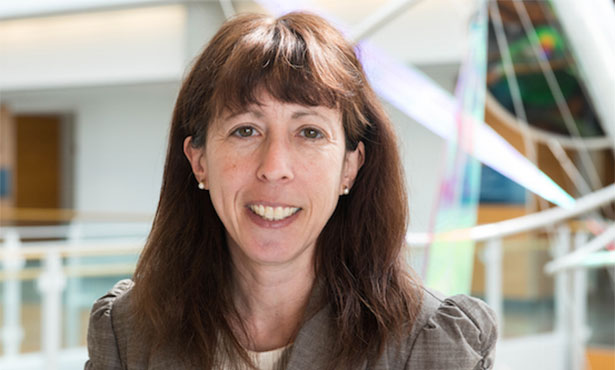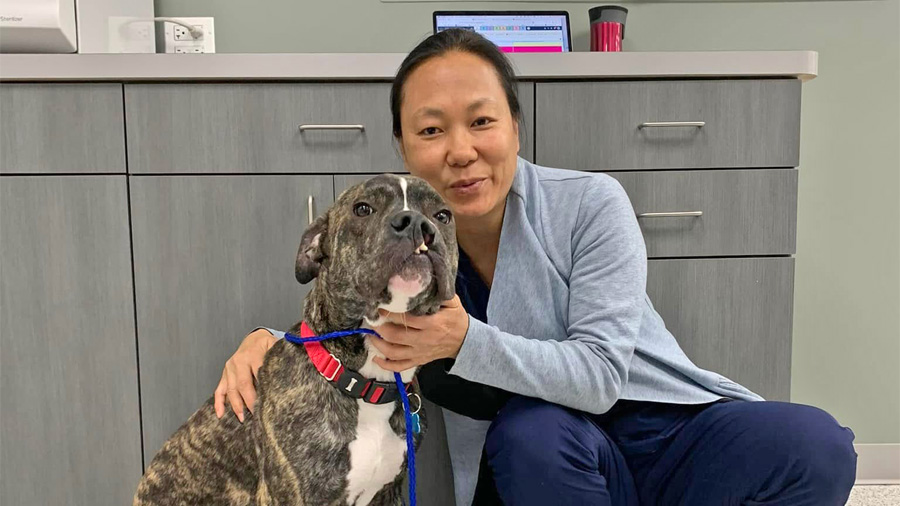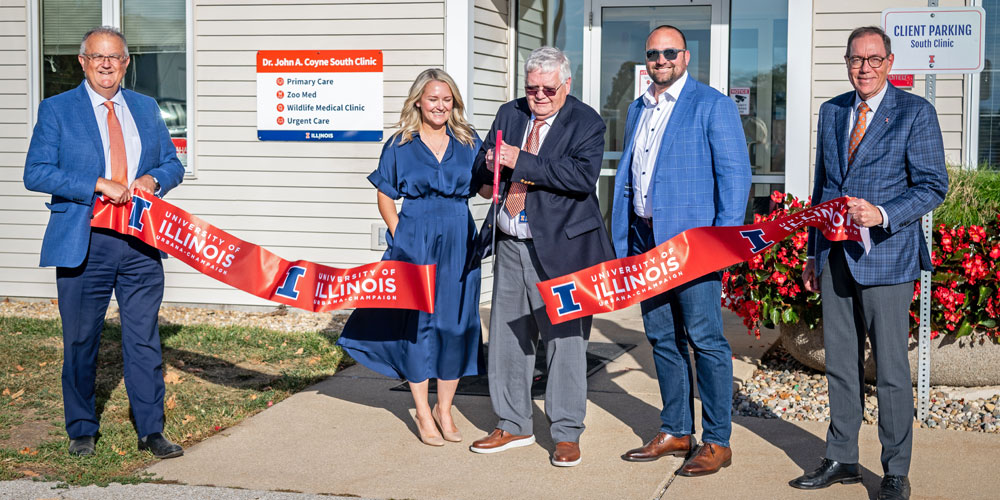Cheryl Rosenfeld started on a path to become a small animal veterinarian. Along the way, however, this University of Illinois alumna changed course to a research career that not only illuminates human health concerns but also nurtures other women who aspire to be researchers.
Dr. Rosenfeld earned both her undergraduate and veterinary degree from Illinois. She entered a residency program at the University of Missouri in 1995, intending to one day practice as a small animal veterinarian with a focus on anatomical pathology. Then she discovered her passion for research, and she has not looked back.
I have always been very passionate about animal health, but I also became interested in how the in utero environment can shape later disease risk in humans because of one of my nieces.
Dr. Cheryl Rosenfeld (DVM '95)
With assistance from a USDA grant, she earned a PhD from the University of Missouri in 2000, then stayed on for post-doctoral training, followed by an offer of a faculty position at the College of Veterinary Medicine at Missouri. She currently teaches histology, microanatomy, pharmacology, and physiology at the college and conducts research in bioinformatics at the university’s Bond Life Sciences Center, or BLSC, which opened in 2004.
Over the years, Dr. Rosenfeld advanced from assistant professor to associate professor, and, in September of 2017, received full professor status.
Achievement of full professor status is noteworthy: Dr. Rosenfeld was one of three women to become the first female full professors in their respective fields in the 13-year history of the BLSC.
Dr. Rosenfeld has always felt strongly about the predominance of male professors in science disciplines. This past summer she helped found a Women in STEM (Science, Technology, Engineering and Math) group at her university.
“When I started [at Missouri], I was concerned with not having enough female leaders to help the junior faculty…. The Women in STEM group aims to ease the difficulty for women to become full professors by giving them a support system of great role models,” Dr. Rosenfeld explained.
Her research in bioinformatics involves sequencing large amounts of data looking for connections. For instance, certain data may differ based on treatment received or chemical exposure. Dr. Rosenfeld’s research looks at this data from a neurobehavioral standpoint.
Recently her lab identified spatial cognitive disabilities in male deer mice whose mothers consumed a diet supplemented with bisphenol A, or BPA, which is a known endocrine disruptor and pollutant. The way in which these males navigate to find suitable mates will be hampered in the mice displaying these particular disabilities.
Dr. Rosenfeld also researches neurobehavioral disorders in animal models that resemble autism spectrum disorders (ASD) in humans. She’s also working to get funding so she can conduct studies with children to extend discoveries made in animal models. Dr. Rosenfeld believes that environmental factors experienced in utero may be playing a role in human neurobehavioral disorders, such as ASD.
When asked what stimulated Dr. Rosenfeld to bridge this gap between veterinary and human medicine, she responded, “I have always been very passionate about animal health, but I also became interested in how the in utero environment can shape later disease risk in humans because of one of my nieces.
“As an adult, my niece is sadly afflicted with several disorders that affect her general health and ability to contribute meaningfully to society. These disorders stem from being exposed during fetal development to a highly addictive sedative drug that her mother was prescribed,” Dr. Rosenfeld continued. “We now recognize that many other chemicals, including endocrine-disrupting chemicals, were once considered safe but can detrimentally influence normal brain and other organ development.”
This personal motivation drives Dr. Rosenfeld to continue her studies and work toward discoveries that will positively impact both animals and humans in the future.
—Emily Luce




